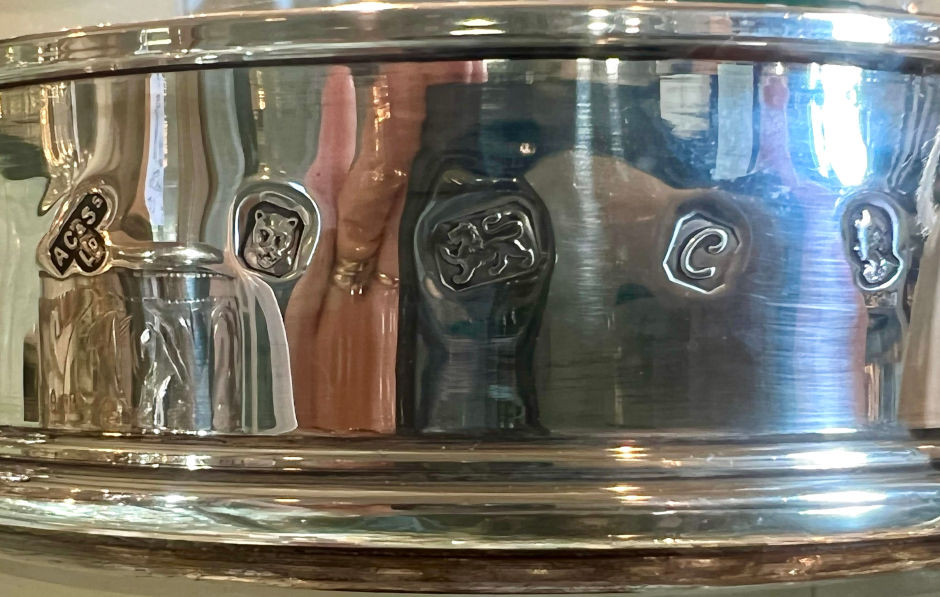
Whether we collect antique silver photo frames or large silver trays, our love for silver antiques remains as popular as ever. But, should you clean antique silver? And, if so, how?
Tarnished silver
As pure silver is too malleable to work with, antique silver objects are an alloy of pure silver with another metal, usually copper. Tarnishing occurs when the other metals combine with environmental factors such as humidity to cause a chemical reaction resulting in a dull, blackened appearance.
Caring for antique silver
Regular care of antique silver is key to effective cleaning and items should be routinely dusted with a soft cloth or brush. A baby’s hair brush is gentle enough not to scratch or mark the silver and a baby’s toothbrush or cotton bud will help in hard to reach places. Lay a soft, cotton cloth on the work surface and always wear cotton gloves when handling the silver, as the oil on fingertips can damage delicate surfaces.
Cleaning tarnished silver
BADA, The British Antique Dealers’ Association, suggests washing antique silver in a solution of mild detergent in hot water. Once the item has been rinsed in hot water, it can be buffed with a soft cloth. For more heavily tarnished items, a proprietary silver polish can be used, which will clean and protect.
Things to avoid when cleaning antique silver
Baking soda – a method of using baking soda combined with aluminium foil to clean silver is widely available on the internet. However, it should be avoided when cleaning antique silver, as baking soda is far too abrasive and can destroy the finish of the piece.
The dishwasher – dishwasher detergent and salt can stain the surface of silver, and cause damage through pitting. With silver cutlery, leftover food (particularly salty foods or sulphurous foods such as eggs and sprouts) can cause tarnishing, so flatware should be handwashed immediately and never left to soak overnight.
Wire wool – never succumb to the temptation to tackle tarnished spots with wire wool. It will scratch the surface of the silver and, with plated items, it could even expose the base metal.
Toothpaste or tomato ketchup – widely used to reduce the appearance of tarnish, both these household items will cause damage; ketchup is acidic and fluoride toothpastes contain compounds that may cause unwanted reactions.
Should vintage silver be polished?
Some believe that silver should be polished and sparkling, while others prefer their antique silver to display a patina that only comes with age. Do not confuse patina which occurs on clean silver, with tarnish, and bear in mind that overzealous polishing can diminish detailing and reduce patina.
How to store antique silver
Silver that is not in frequent use or on display, should be stored in acid-free tissue paper and wrapped in undyed cotton or linen fabric.
When displaying silver, humidity levels should be 50% but where this is not possible, avoid excessively damp or moist conditions. Anti-tarnish paper can be placed into display cabinets to reduce the risk from environmental factors, reducing the rate of tarnishing.
When not in use, silver flatware should be stored in a cutlery chest or a cutlery roll, but should never be put away unless it is completely clean and dry.
Avoid storing silver in plastic bags as the sulphur content in plastic can cause tarnishing and moisture can be trapped inside the bag. Opt instead for airtight polythene bags. Similarly, avoid oak boxes or drawers because of the acidity of the wood.
At Hemswell, we have specialist dealers of antique silver and antique silver plate, many of whom are members of BADA and LAPADA, The Association of Art and Antiques Dealers. When on site, our experts are happy to advise you on any aspect of caring for your antique silver and we always welcome visitors to enjoy a day browsing our four buildings, not far from the historic cathedral city of Lincoln.